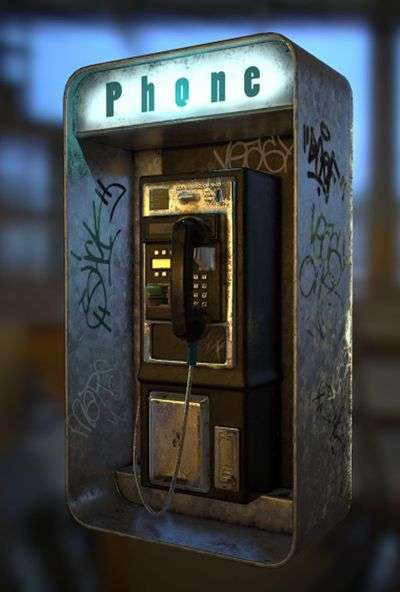
Landline Phone Service Is Going Away!
Out with the Old: The Not so Bright Future of Landline Phone Service
In an increasingly digital world, with mobile service and accessibility constantly at our fingertips, certain technologies that were once revolutionary are fading into obscurity. One of those once-groundbreaking technologies is POTS, or Plain Old Telephone Service.
POTS is just that, a telephone service that uses a now old-fashioned analog signal transmission, otherwise known as a landline. It was introduced in the late 1800s, and was held as the standard service from telephone companies into the late 1980s.
POTS technology remains a basic mode of small business and residential telephone network connection in many areas of the globe, but as you’ll soon discover in this piece, has remained largely unchanged since its introduction.
After all, with the introduction of features like Touch-Tone dialing, which replaces rotary dialing and Electronic Telephone Exchanges, which replace the need for an operator to connect callers, it’s no wonder an alternative to landlines is next.
In with the New: The Alternative to Landline Phone Service
The key characteristic that defines POTS, not to mention the one major contributing factor to its abandonment, is the conduction material used to generate the signal that makes communication by telephone via POTS possible.
This material is copper, meaning POTS depends on a hardwired connection from the phone company directly to the household. This use of material is not only incredibly costly, but also proving inefficient compared to recent advances in technology.
In many new housing and real estate developments, the future of landlines is solidified as POTS is omitted entirely, and the developments are instead connected to phone companies through non-hardwired connection.
The most advanced of these connections in the replacement of copper hardwiring with optical glass fibers, otherwise known as Fiber Internet. Fiber internet technology uses light pulses to send messages, and is both more efficient and more reliable than POTS.
A connection can be drawn between fiber-optic communication and the advances mentioned previously, like Touch-Tone dialing and Electronic Telephone Exchanges. These advances were naturally adopted by users as technology progressed, as they increased efficiency and reliability by automating processes and increasing speed of communication.
Many industry executives and leaders predict POTS will soon be seen as nothing more than an archaic predecessor to Cellular Telephone Systems and in turn VoIP (Voice Over Internet Protocol, an alternative to landlines and the technology for voice communications and multimedia sessions to be delivered over IP networks like the Internet). POTS, and the hardwired connection that defines it, is simply the precursor to the fiber-focused future of telephone service.
What the POTS Line Going Away Means for Individuals & Businesses
Many realize this future is now. A trend toward Fiber means many are getting rid of landlines to keep up with a growing need and expectation for mobile speed and efficiency is noticeable, even to the average consumer.
With a huge portion of e-commerce and an even larger portion of day-to-day communications and interactions conducted with mobile phones, companies big and small see that profits lie with the adoption of new technology.
An article from Business Insider notes that, according to a study released by The National Center for Health Statistics, in 2018, 53.9% of all U.S. households depended solely on cell phones for communication needs, up from 15.8% a mere 12 years earlier.
This is an incredibly rapid rate of change, especially considering the technology employed in POTS has remained largely unchanged since its introduction nearly 150 years ago. As mentioned earlier, this denotes a massive shift not only for individuals and consumers, but also for businesses and entrepreneurs.
Today’s business owners must be willing to accept and embrace new technology and find an alternative to the landline and look for a POTS line replacement, or find themselves at risk of being left behind.
The same Business Insider article cites the statistic that landline use in businesses has fallen by 36% from 2010-2018, and is only predicted to continue on its sharp decline both in the United States and Internationally.
Beyond this, a POTS line going away may have serious mechanical and safety concerns for businesses that rely on POTS for elevator emergency phone requirements.
Without the reliability of POTS for its function in the case of an emergency or internet outage, many businesses and residential buildings are being forced to secure an elevator phone replacement with a cellular elevator phone line for functions like elevator monitoring.
How Big Telephone Companies & Key Legislation are Sparking Action
AT&T copper retirement programs led the charge in phasing out landline use. In 2017, Paul La Schiazza, AT&T Illinois President, gave the following quote to the Chicago Tribune regarding POTS:
“We’re investing in a technology that consumers have said they don’t want anymore, and wasting precious hundreds of millions of dollars that could be going to the new technologies that would do a better job of serving customers.”
This money-saving aspect may be another major motivator for consumers and businesses to adopt new technology.
By 2017, Illinois was just one of 20 states whose lawmakers voted to give AT&T copper retirement the green light, according to CBS. Alabama, Arkansas, Florida, Georgia, Indiana, Kansas, Kentucky, Louisiana, Michigan, Mississippi, Missouri, Nevada, North Carolina, Ohio, Oklahoma, South Caroline, Tennessee, Texas and Wisconsin made up the other 19 states ready to end landline service.
In April 2019, Verizon, another industry leader, matched the AT&T copper retirement pace by ramping up pressure to retire POTS in favor of Fiber in New York, Massachusetts, Maryland, Virginia, Rhode Island and Pennsylvania.
This means Verizon aims to retire copper in both suburban areas and major urban areas like New York City. In a 2019 filing with the Federal Communications Commission (FCC), Verizon noted it would cease to support copper-using POTS in the states mentioned above and will no longer perform maintenance on copper in order to give precedence to Fiber Networks.
Verizon’s aggressive adoption strategy in favor of Fiber makes quick and efficient plans to bring Fiber to residential and suburban areas (not just larger urban areas).
This new push for legislation means individuals and businesses need reliable solutions for a seamless shift from traditional landline service, whether that means making arrangements to find a POTS line replacement, POTS Adapter or elevator phone solution.
It’s important to remember that the retirement of copper impacts businesses even more than it does individuals, and that your business must have a plan of action when switching from POTS to a more current technology.
What telecommunications companies are phasing out POTS in the United States?
Several telecommunications companies in the United States are phasing out traditional Plain Old Telephone Service (POTS) in favor of newer digital phone services. Here are some examples of companies that are actively making this transition:
- AT&T: AT&T has been gradually phasing out POTS service since the early 2010s, and it is no longer available in many areas. The company has been promoting its Voice over Internet Protocol (VoIP) service, which uses an internet connection to make phone calls.
- Verizon: Verizon has also been moving away from POTS and transitioning to its Voice over Fiber (VoF) service, which uses a fiber-optic network to provide voice communication. The company has set a goal to retire its copper-based POTS network by 2030.
- CenturyLink: CenturyLink has been transitioning to its PrismTV service, which provides digital phone services alongside internet and television packages.
- Frontier Communications: Frontier has been transitioning to its Voice over Internet Protocol (VoIP) service and has set a goal to retire its copper-based POTS network by 2025.
With Landline Phone Service Going Away, Lets Talk Solutions:
At Safety First Wireless, we know that landline phone service going away can create a problem for many businesses and residential buildings. A POTS adapter or landline replacement plan is crucial for keeping up with safety and technology standards.
One specific example of where this is especially important is in an elevator telephone. A cellular elevator phone or an elevator phone line using cellular is key, as every elevator needs to have a phone line connected for emergency purposes.
Safety First Wireless makes it easy to cut the expensive and archaic analog line in favor of cellular. Our elevator cellular gateways offer an advanced LTE solution that is ready to tackle this, especially with its battery backup.
Everything you need for an elevator landline replacement. We specialize in creating a worry-free transition for all essential business functions, from credit card and point of sale transactions, wifi, fire and burglar alarms, faxes and more.
Now that you’ve learned about the future of landlines, contact us today to get started on your business or real estate solution.

Discontinuation of POTS (Plain Old Telephone Service)
- In an effort to reduce costs, telephone companies will soon be retiring all copper based communication lines.
- Major carriers have been moving towards VOIP for years.
- FCC is assisting carriers in the process
- It’s a matter of when, not if
All Analog Connections Are Targeted
Emergency Lines
- Fire Alarm Panels
- Intrusion Alarms
- Emergency Call Boxes
- Elevators
Non-emergency services
- Fax lines
- Point of Sale
- Phones
- ATM’s
- Credit Card Machines
- Gate Access
